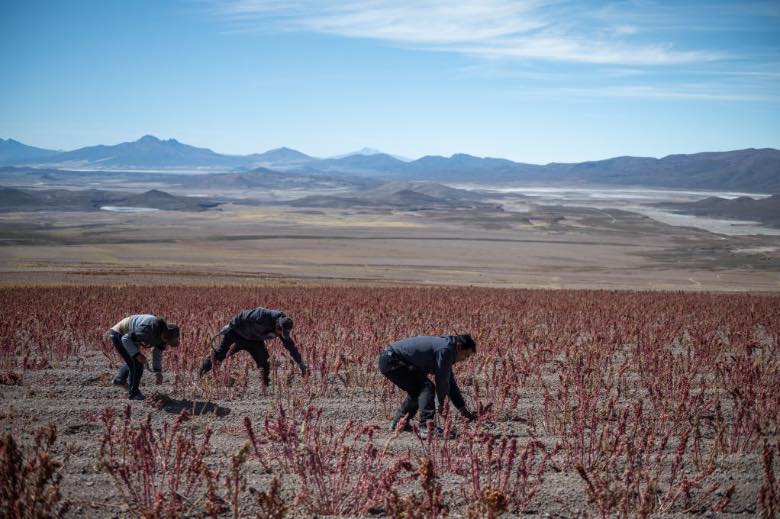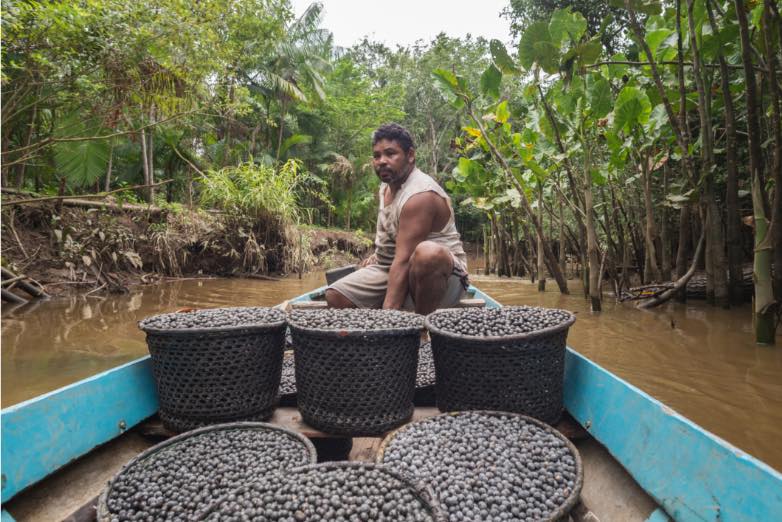Some people associate them with sustainable and traditional cultivation, but the huge global increase in demand for so-called superfoods is causing drought, soil degradation and deforestation.
Avocado, quinoa, goji berries, acai, chia seeds… Every season new and exotic foods are added to the list, promising to help us lose weight, protect our hearts, strengthen our immune systems, reduce our inflammation or detoxify our bodies. They are known as superfoods and, despite the proliferation of the term, it has never been established what a food should contain to claim this title. “There is no official definition, either from a scientific or a legislative point of view,” confirms Jara Pérez-Jiménez, a researcher at the Institute of Food Science and Technology and Nutrition (ICTAN-CSIC) in Madrid, Spain, and author of the book Los superalimentos (Superfoods). “In any case, superfoods would be part of an overall dietary profile, because an isolated food is pointless, no matter how good its composition, in the context of an unhealthy diet.”

Although they do have some interesting nutritional properties, they don’t provide any immediate health benefits. Nor do they offer us anything we cannot find in other foods typical of our Mediterranean diet. “Avocados have a very good fat profile, the majority of which is monounsaturated. But that is exactly what we get with olive oil. So, although we can incorporate this fruit into our diet, it is not essential for a healthy diet (in fact, no food is),” says Pérez-Jiménez. Quinoa is high in protein and fibre, but no more than chickpeas. Goji berries are rich in polyphenols, but with a similar content to plums. They also contain beta-carotene, but half a carrot would give you everything your body needs.

“The term superfood is a label created by some very good marketers that has led to a great demand worldwide, which has meant that more needs to be produced and in a more industrialised way,” explains María José Sanz, author, together with Ainhoa Magrach, of a study published in the journal People and Nature and promoted as “Superfoods”, a super-impact on the environment. The researchers from the BC3 Basque Centre for Climate Change highlight the environmental damage caused by food mileage—the transport of food is one of the fastest growing sources of greenhouse gas emissions—but the biggest problem is undoubtedly the cost of mass producing these products and how it affects the population in their countries of origin. “The cultivation of these foods is concentrated in just a few countries, and this has a huge environmental and social impact,” says Sanz.

This is exactly what has happened with avocados in Mexico, quinoa in Bolivia and acai in Brazil. Quinoa was a staple food of the indigenous people, its cultivation was based on a rotation system, and llamas and alpacas fertilised the soil. Little or nothing of that system remains. In order to meet global demand and obtain the maximum amount per year, cultivation has become intensive, which has degraded the soil and may eventually render it unusable. “It has become an attractive product for export and at higher prices, to the point where indigenous people are deprived of their staple food,” the author says.
Loss of biodiversity and more drought
Something similar is happening with the acai berry, the fruit whose dark purple colour is a real viral phenomenon on Instagram. Brazil accounts for 85% of global production, and in order to meet the enormous demand, structural changes are being made in the Amazon. “To expand the crop and get the maximum yield, trees are being cut down, which is undoubtedly causing a loss of biodiversity. While the acai is certainly leading to great harm, it is the avocado that is causing the most devastation, due to the huge demand for this fruit worldwide and the amount of water needed for its cultivation,” explains Ainhoa Magrach. While acai production is around 1.5 million tonnes per year, avocado production, concentrated in Mexico, Colombia, Peru and Chile, is around eight million tonnes. “Despite the fact that Chile is experiencing the worst drought in its history, with areas where the population has limited access to water, avocado cultivation (which requires 2,000 litres of water per kilo) continues to expand.”

The problem is not the crop itself, but the need to supply what millions of consumers are demanding. Francisco González Torres, professor of agronomic engineering at the Polytechnic University of Madrid, cites the example of quinoa. “It is not an aggressive crop, as long as it is grown rationally, with rotations that allow the soil to recover. The problem is to manage to grow it outside its native area, as this requires new and improved varieties. The process of adapting it in other parts of the world, including Spain, is going slowly,” he admits. This would be one of the solutions to limit the devastation caused by the skyrocketing demand. Another is to consume local foods with the same characteristics as those from distant regions. As Magrach points out, “consumers need to know where the products they eat come from and the impact they have. Many of them don’t eat red meat because of the environmental cost of its production, but they don’t know what effects the avocado on their toast is having.”
Comments on this publication